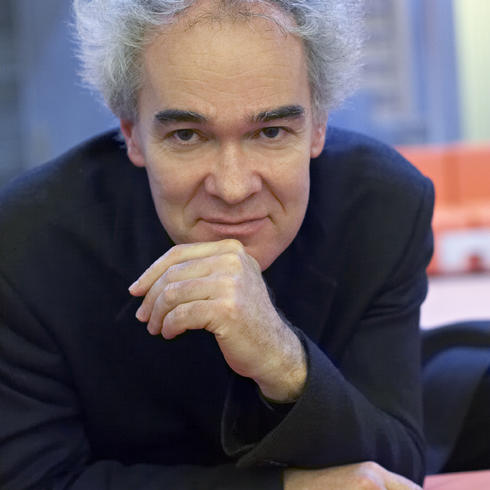
" Reflections (2019) "
Concerto pour piano et orchestre
Ed. Lemoine
SELECTION 2021
- Nominated for : The Musical Composition Prize 2021
The title "Reflections" has a double meaning in English: both thought and reflection. This score is an echo, a reflection of thoughts I had after the performance of my opera Bérénice, in autumn 2018, at the Palais Garnier in Paris. It was a period which was quite difficult for me, since it was marked by the death of Éric Daubresse, a producer of computer music at Ircam. He was also a colleague, a composer, a very discreet man, of great rigour with a very strong sense of ethics. This concerto is dedicated to him.
This concerto comprises three separate movements - which is quite rare for me - corresponding to the classic pattern of quick-slow-quick, with a first movement which is itself quick, then slow, then again quick, then slow once more. Once the orchestral introduction has passed, the piano takes up the central note, "F sharp," and sets out the chords of this movement: interlocking fifths, which the orchestra will enlarge. At the end of this movement, bells ring out, referring directly to a moment which struck me during a Catholic Mass in the memory of another deceased person.
It is a way of preparing for the central movement. This is a moment of stability, of contemplation, conceived as a canon, in which the fifth interval plays an important role. The last movement, more rhythmic, more bouncy is made up of parallel diminished fifths. Here the subterranean flow, which has innervated the concerto from the beginning, can be heard more clearly.
The central movement is very simple technically, but the other two are challenging. Bertrand Chamayou has a magnificent technical facility, which I wanted to use. I like the idea of writing for someone who will perform a work, then taking it back.
This concerto is the fourth by Michael Jarrell for violin, after, ... Prisme / Incidences ... in 1998, dedicated to the violinist Hae-Sun Kang then Paysages avec Figures Absentes - Nachlese IV, in 2010 performed by Isabelle Faust and Des Nuages et des Brouillards in 2016 intended for Ilya Gringolts. This opus dedicated to Renaud Capuçon was commissioned by Suntory Hall in Tokyo, the National Orchestra of the Pays de la Loire and the Gürzenich in Cologne. Its world premiere was performed on 30 August 2019, by the Tokyo Symphony Orchestra, conducted by Pascal Rophé.
"For me, composing a concerto is writing for a specific artist I am learning to understand. The piece becomes a kind of portrait. I, therefore, automatically treated the violin differently in each of the four concertos.
Four movements feed this one.
The first is very virtuoso and dynamic. The orchestra begins the second movement and sets up, with particular modes of playing, a regular movement of semiquavers, the soloist playing only pizzicato. The third has a slow character and ends in a slow melody in E. As for the last movement, it returns to the virtuosity of the first movement to end in a final climax. "
Michael Jarrell

